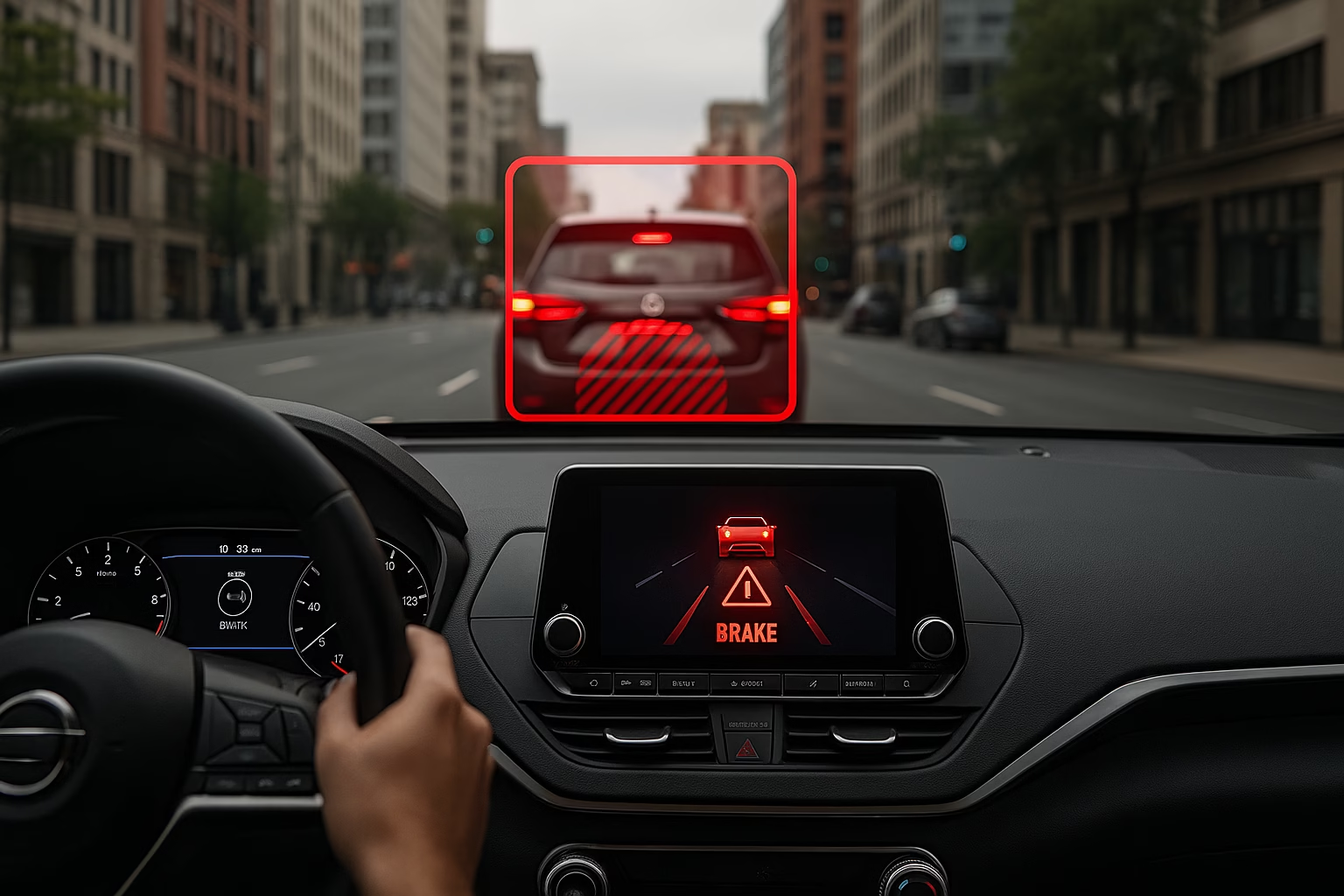You are cruising along, music playing, when suddenly your car slams the brakes.
There is no crash, no warning from you.
The car did it on its own.
That is probably Autonomous Emergency Braking (AEB) doing its job.
But why did it react like that? And can you trust it? Here is what you need to know.
What Is AEB?
Autonomous Emergency Braking is an advanced safety feature designed to stop your car automatically if it detects an imminent collision. It uses radar, camera, or both to monitor the road ahead.
If the system thinks a crash is likely and the driver does not react in time, AEB will:
- Warn the driver with sounds or visuals
- Pre-load the brakes for faster response
- Apply the brakes automatically if no action is taken
Why Does AEB Trigger Suddenly?
AEB is tuned to react fast. It would rather stop you early than miss a crash. But this means it can feel aggressive or unpredictable in some situations:
- A car cuts in sharply and brakes
- A pedestrian steps out from behind a parked car
- A cyclist moves across your lane quickly
- You are turning and the system misreads the path
- There is a shadow, bag, or leaf that looks like an obstacle
These are sometimes called false positives. Annoying? Yes. But it means the system is watching even when your brain takes a moment to catch up.
Does AEB Always Work?
Not always. Like any safety system, AEB has limits. It may not react correctly if:
- The radar or camera is blocked by dirt or fog
- Visibility is poor at night or in heavy rain
- The vehicle ahead is braking very suddenly
- The surface is slippery and braking distance increases
- The system has not been calibrated after repairs
That is why AEB is a backup and not a substitute for alert driving.
Different Names for AEB
Car makers often give AEB a branded name. Here are a few you might see:
- Toyota – Pre-Collision System
- Subaru – Pre-Collision Braking (part of EyeSight)
- Mazda – Smart Brake Support
- Hyundai – Forward Collision-Avoidance Assist
- Volkswagen – Front Assist
- Honda – Collision Mitigation Braking System
These are all forms of AEB. Some include pedestrian or cyclist detection. Some only warn, while others will fully stop the car.
What To Do After an AEB Stop
If your car brakes hard unexpectedly:
- Stay calm and regain control
- Check your dash for any warning lights
- Make sure the front sensors or camera are clean
Review the situation. Was there something the system spotted before you? If it keeps happening, get it checked. A calibration may be needed
Final Tip
Autonomous Emergency Braking is not perfect, but it is one of the most important developments in car safety since ABS. It is watching when you are distracted, tired, or just not fast enough.
If it kicks in now and then, that means it is working. But if it kicks in too often or too late, it might be time for a scan and recalibration.
For more plain‑English guides and FAQs, explore our Driver’s Lounge.

Hiran Alwis is an automotive lecturer and ADAS specialist with over 15 years of experience in diagnostics, advanced safety systems, and technical training. He founded ADAS Project to help everyday drivers and workshop technicians understand and safely use advanced driver assistance systems.
